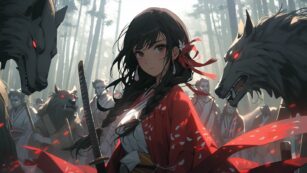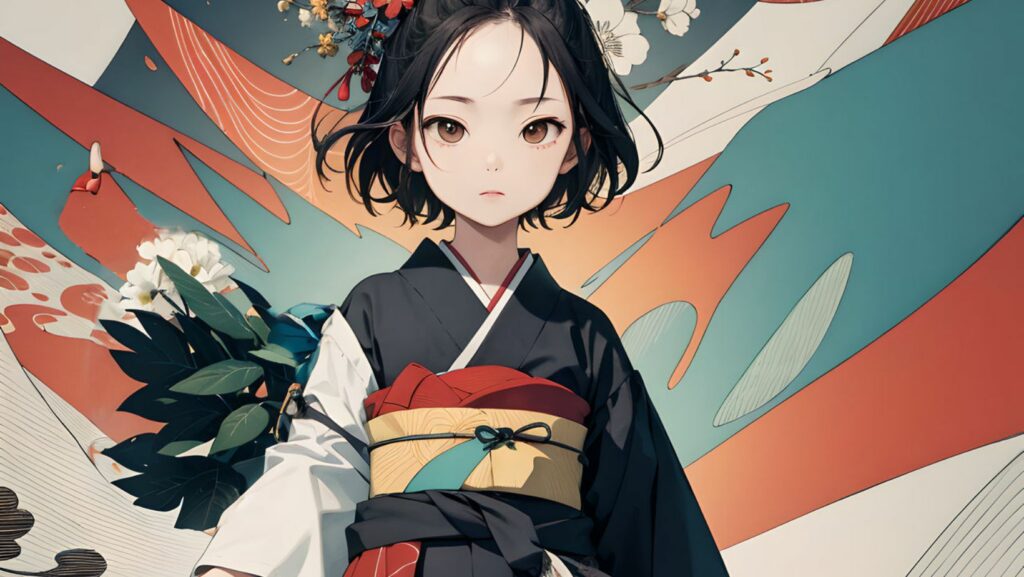Anime culture has exploded across the globe, captivating audiences with its unique blend of art, storytelling, and emotion. Originating in Japan, anime has transcended cultural boundaries, becoming a universal phenomenon that resonates with fans of all ages. From iconic series like “Naruto” and “Dragon Ball” to critically acclaimed films such as “Spirited Away,” anime offers a diverse range of genres and styles that appeal to a wide variety of tastes.
The allure of anime lies in its ability to transport viewers to fantastical worlds while tackling complex themes and issues. It’s not just about entertainment; anime often delves into deep philosophical questions, social commentary, and intricate character development. This cultural juggernaut has also influenced fashion, music, and even technology, creating a vibrant community that thrives both online and offline. As anime continues to grow, its impact on global pop culture is undeniable, making it a fascinating subject for exploration.
Anime Culture
 Anime culture encompasses more than just animation; it’s a global phenomenon that influences various aspects of life. Fans engage deeply with anime characters and storylines through cosplay, creating costumes to emulate their favorite figures from shows like “My Hero Academia” or “Sailor Moon.” Conventions, such as Anime Expo and Comic-Con, attract thousands of enthusiasts who gather to celebrate their shared passion. These events often feature panels with voice actors, artists, and creators, offering fans the opportunity to interact and gain deeper insights into the anime world.
Anime culture encompasses more than just animation; it’s a global phenomenon that influences various aspects of life. Fans engage deeply with anime characters and storylines through cosplay, creating costumes to emulate their favorite figures from shows like “My Hero Academia” or “Sailor Moon.” Conventions, such as Anime Expo and Comic-Con, attract thousands of enthusiasts who gather to celebrate their shared passion. These events often feature panels with voice actors, artists, and creators, offering fans the opportunity to interact and gain deeper insights into the anime world.
Merchandise plays a significant role in anime culture, with products ranging from action figures to apparel. Stores dedicated to anime merchandise, including figures from “One Piece” or “Attack on Titan,” exist both online and physically. This commercial aspect fuels the industry’s growth and helps sustain its cultural impact.
Anime’s impact extends into academic settings as well. Universities now offer courses focused on Japanese animation and its cultural significance, inviting rigorous study of its themes, history, and impact on art and society. This interest marks anime’s evolution from a niche hobby to a recognized field of scholarly analysis.
Social media fosters anime culture by providing platforms for fans to discuss, share, and promote content. Platforms like Twitter, TikTok, and Reddit host sprawling communities where fans debate plotlines or create fan art. This connectivity strengthens the cultural ties within the anime community, ensuring continued engagement and expansion.
Key Elements of Anime Culture
Anime culture comprises unique traits that set it apart as a distinct art form. These elements contribute to its wide-reaching influence and appeal.
Art and Animation Style
 Anime stands out for its distinctive art style, characterized by vivid colors, expressive characters, and dynamic action sequences. It incorporates various visual techniques, such as exaggerated facial expressions and intricate background details, to convey emotion and atmosphere. The use of limited animation enables creators to focus on storytelling and character development while maintaining high-quality visuals. Iconic series like “Attack on Titan” and “My Hero Academia” exemplify these artistic conventions, showcasing how anime art captivates audiences globally.
Anime stands out for its distinctive art style, characterized by vivid colors, expressive characters, and dynamic action sequences. It incorporates various visual techniques, such as exaggerated facial expressions and intricate background details, to convey emotion and atmosphere. The use of limited animation enables creators to focus on storytelling and character development while maintaining high-quality visuals. Iconic series like “Attack on Titan” and “My Hero Academia” exemplify these artistic conventions, showcasing how anime art captivates audiences globally.
Music plays a crucial role in anime, enhancing storytelling through memorable compositions. Soundtracks blend various genres, from orchestral to J-pop, creating an immersive audio experience. Notable composers like Joe Hisaishi and Yoko Kanno have gained international recognition, contributing to works such as “Spirited Away” and “Cowboy Bebop,” respectively. Opening and ending theme songs hold cultural significance, with performers often gaining popularity due to their association with beloved series, further cementing music’s integral place in anime culture.
Challenges and Criticisms
 Despite its widespread appeal anime culture isn’t without its challenges and criticisms. Some argue that certain content perpetuates stereotypes or presents problematic themes that can impact viewers negatively. Moreover the sheer volume of anime produced each year can lead to oversaturation making it difficult for quality series to stand out. Additionally the industry’s demanding production schedules raise concerns about the working conditions of animators and staff. However these challenges also present opportunities for growth and dialogue within the community. By addressing these issues anime culture can continue to evolve and thrive fostering a more inclusive and sustainable environment for fans and creators alike.
Despite its widespread appeal anime culture isn’t without its challenges and criticisms. Some argue that certain content perpetuates stereotypes or presents problematic themes that can impact viewers negatively. Moreover the sheer volume of anime produced each year can lead to oversaturation making it difficult for quality series to stand out. Additionally the industry’s demanding production schedules raise concerns about the working conditions of animators and staff. However these challenges also present opportunities for growth and dialogue within the community. By addressing these issues anime culture can continue to evolve and thrive fostering a more inclusive and sustainable environment for fans and creators alike.

